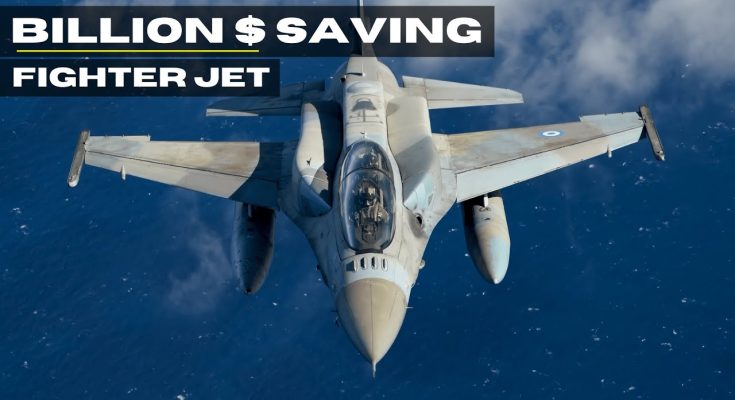The F-16 Fighting Falcon is widely regarded as one of the most affordable and versatile fighter jets in the world, particularly when it comes to operational costs. Originally designed by General Dynamics (now Lockheed Martin) in the 1970s, the F-16 was intended to be a lightweight, multirole fighter capable of engaging in air-to-air combat, ground attack missions, and reconnaissance tasks. Over the decades, the F-16 has undergone numerous upgrades, making it a highly effective aircraft for modern air forces.
Cost-Effective Operations
One of the key reasons why the F-16 is considered America’s cheapest fighter jet to fly is its low operational and maintenance costs compared to other advanced fighter aircraft like the F-22 Raptor or F-35 Lightning II. The F-16’s simplicity in design and its relatively low purchase price have made it a popular choice for air forces around the world, including in the U.S. military.
In terms of operating costs, the F-16 is particularly cost-efficient. On average, the F-16 costs about $8,000 to $12,000 per flight hour, depending on the version and maintenance practices. This is significantly lower than more advanced stealth fighters, which can cost upwards of $30,000 per hour to operate. The F-16’s ability to balance advanced capabilities with cost-effective operations has allowed it to remain in service for decades and continues to make it a staple in both the U.S. Air Force and allied nations’ fleets.
Factors Contributing to Low Operational Costs
Several factors contribute to the F-16’s relatively low operational costs. The first is its efficient engine. The Pratt & Whitney F100-PW-229 engine that powers many F-16s is both reliable and affordable to maintain. In addition, the F-16’s airframe is relatively simple compared to newer aircraft designs. This results in less frequent and less expensive maintenance. Additionally, its widespread use by many nations has led to economies of scale, making parts and service contracts more affordable.
Another important factor is the F-16’s versatility and multirole capability. The jet is equipped to perform a wide range of tasks, from air superiority missions to ground strike operations, which eliminates the need for multiple specialized aircraft. This versatility also reduces the need for extensive fleet management and maintenance for different types of aircraft, further driving down costs.
Enduring Popularity and Global Reach
The F-16’s affordability and reliability have made it a go-to choice for air forces around the world. As of today, more than 25 countries operate various versions of the F-16, with a combined fleet of over 4,500 aircraft. This wide adoption ensures that there is a robust supply chain for parts and support, further driving down costs for operators.
In addition to its operational cost-effectiveness, the F-16’s cost is also appealing for countries that wish to modernize their air forces without breaking the bank. The U.S. government has continued to provide updated versions of the F-16 to allies around the world, ensuring that the aircraft remains relevant and capable in modern warfare environments. These upgrades typically include enhanced avionics, weapons systems, and sensors, all of which help the F-16 remain a formidable asset at a fraction of the cost of newer fighter aircraft.
Conclusion
In summary, the F-16 Fighting Falcon is the cheapest American fighter jet to fly, offering excellent value for its operational and maintenance costs. Its versatility, proven design, and widespread use across the globe ensure that it remains a critical part of the air force fleet for both the United States and numerous allied nations. With its affordable operational costs, the F-16 continues to be an indispensable asset, combining cutting-edge technology with cost-effective performance.



